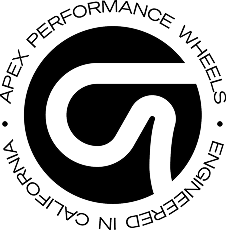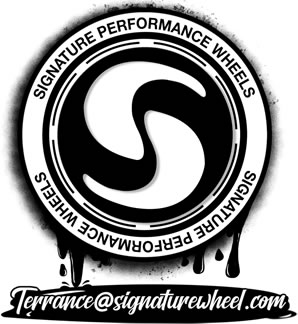This is a long and detailed post as requested ... a brain dump. Forum members, please keep me honest and call out any errors. My disclaimer is that the solution I discuss in this posting is a non-Cadillac solution. I am neither a mechanic nor an automotive engineer.
I have "self-diagnosed" that the core problem that we, the Cadillac CT4V-BW / CT5V-BW community as a group is running into with the so-called "rotor warping" is actually rotors that have exceeded the maximum assembled lateral runout (LRO). In layman's terms, the rotor develops an uneven thickness.
If you experience this issue and you get the dealer to replace the rotors under warranty then, please use that route to resolve the issue! New hardware is always a preferred solution. However, if you are paying for new rotors and the rotor discs are still within specification for thickness, then read on .....
THE PROBLEM:
(a) Uneven brake pad burnishing for the stock OEM brake pads and rotors
MAY be a primary cause of low mileage rotors that attain a state where they exceed the maximum assembled lateral runout (LRO).
(b) repeated anti-lock brake engagement, either during street or track use
MAY be a primary cause of low mileage rotors that attain a state where they exceed the maximum assembled lateral runout (LRO).
THE SYMPTOM:
Brake system vibration that is experienced at the steering wheel or brake pedal.
THE SOLUTION:
If the rotors exceed the maximum assembled lateral runout (LRO) they MAY need to be replaced. This is the dealer solution. This is also the best solution if new rotors are covered under warranty.
The home brew solution. Install Sintered Brake Pads - these pads will remove NOA brake pad deposits after 1 or 2 track days with multiple hard but not ABS braking at a speed of 120+MPH.
THE "NON-ENGINEER" RATIONALE FOR WHY THE SOLUTION WORKS:
If the cause of rotors that have exceeded the maximum assembled lateral runout (LRO) is uneven brake pad deposits, then the use of Sintered metallic brake pads MAY remove those deposits and reduce or eliminate the problem.
Sintered metallic brake pads work by using direct metal-to-metal friction rather than deposit-on-deposit friction. They will remove the deposits made OEM brake pad under heavy braking.
Note that I am not the only person suggesting this state and or solution:
This screen capture is from the forum Thread - ct4 v blackwing upgraded rotors.
MY PERSONAL EXPERIENCE WITH BRAKE VIBRATION:
I experience brake vibration after 3 track days - approx mileage 5K. Three dealers stated that I had "warped rotors" due to track use and that the rotor replacement was not covered under warranty and would be in the $2500 range.
After two track days using EBC SR11 brake pads, the significant brake vibration during medium to hard braking that I was experiencing has been corrected.
Therefore, my issue has likely caused by heavy ABS braking using the stock pads.
Note that EBC SR11 will make your initial brake bite harder and stop quicker. You may not like this effect. I love it. Just brake softer when you don't need it. But many people may not like the effect. If that is you, then use the pads to fix the problem and then replace them with OEM pads. It beats a $2500 rotor replacement.
INFORMATION ON THE BLACKWING BRAKE SYSTEM:
(1) - The "steel rotor" Blackwings CT4V/CT5V (option J6G) brakes use Non-Asbestos Organic (NAO) Brake pads.
This brake system has a Hat and a Disc that as a unit makes up the complete Rotor.
Currently, GM is selling the rotor as a complete unit - Hat and Disc.
(2) NAO style brake pad function, "generate friction", using NAO deposits on rotors to the NAO brake pads.
This is the reason that the owner's manual stated that you need to burnish your brake pads prior to track use, when heavy friction is required to generate heavy braking.
(3) Brake Burnishing - Direct from the CT4V-BW Owners Manual:
For vehicles equipped with front Brembo brake systems: Performance/racing brake pads are required prior to racing or closed-track driving. Vehicles with option code JE2 have performance brake pads. New brake pads must be burnished before racing or other competitive driving.
More details are provided in the Service Manual - Document ID 2082996
(a) accelerate to 30PMH, hard brake with no anti-lock, allow cooling of brakes and repeat 20 times
The new vehicle break-in period should be completed before performing the brake burnish procedure, otherwise damage may occur to the powertrain/engine.
(4) NAO brake pad use can under specific conditions lead to assembled brake rotor lateral runout that exceeds the specification and causes thickness variations to develop on the rotors. Reference Service Manual document 2082849. It is this rotor state, a rotor that has out-of-spec LRO, that many people are referring to as "warped rotors". This is not heat metal deformation, what many people envision as warped metal rotors.
(5) NAO brake pads are a great "compromise brake pad" for street and light track use, reference the chart below:
(6) - Brake Dust, per brembo, is rotor dust not brake pad dust. Therefore by inference, if a brake pad is generating dust, it is eating up your rotors.
(7) - The Blackwing NAO brake pads function by depositing a thin layer of brake pad deposits on the rotor.
(8) - When exposed to heavy braking, and especially ABS braking, the deposits on the rotor become uneven. Likely this is caused by the ABS action
(9) - If exposed to heavy braking, like at the track, rotors get very hot. If you then hold the brake you might transfer brake pad material on the rotor unevenly.
(10) - The Blackwings use an extra caliper and brake pad on the rear brakes. However, if you set the parking brake when the rotors are hot after heavy braking you might also add more deposits. But these would be on the rear rotors, and the problems seem to be more front rotor related. I do not know if cold rear parking brake pads are more or less likely to add deposits than hot rear brake pads. But this would affect only the rear brakes, not the front brakes.
===============================================================
Sintered brake pad overview from my friend ChatGPT:
Sintered brake pads are a type of brake pad commonly used in high-performance and heavy-duty applications, such as racing vehicles and motorcycles. They are made from a combination of metallic particles and other materials that are compacted and fused together using heat and pressure. Here's how sintered brake pads work:
- Friction Material: The main component of sintered brake pads is a mixture of metal particles, such as copper, bronze, iron, or steel, combined with other additives. This mixture is designed to create a strong and stable friction material that can withstand high temperatures and heavy use.
- Manufacturing Process: The raw materials are mixed, compacted, and then subjected to a high-temperature sintering process. During sintering, the metal particles are fused together, creating a solid and porous structure with uniform friction properties.
- Braking Action: When you apply the brakes, the brake caliper squeezes the brake pads against the brake disc (rotor) on each wheel. This action generates friction between the sintered brake pads and the brake disc, converting the kinetic energy of the moving vehicle into heat energy.
- Heat Dissipation: Sintered brake pads are specifically designed to handle high levels of heat. The porous structure of the material allows it to disperse heat effectively, preventing the brakes from overheating during intense braking situations, such as repeated heavy braking or driving downhill.
- Consistent Performance: Sintered brake pads provide consistent and predictable braking performance over a wide range of temperatures. This characteristic makes them ideal for high-performance vehicles, off-road use, and situations where braking conditions may be more demanding.
- Durability: Sintered brake pads generally have a longer lifespan compared to other types of brake pads, like organic or semi-metallic pads. Their robust construction and ability to withstand heat contribute to their durability and resistance to wear.
- Brake Dust: One downside of sintered brake pads is that they tend to produce more brake dust compared to organic pads. This is due to the metal particles and abrasive nature of the friction material.
Overall, sintered brake pads are an excellent choice for high-performance and heavy-duty applications where consistent and reliable braking performance is crucial. However, for everyday driving or less demanding conditions, organic or ceramic brake pads may be preferred due to their quieter operation and lower dust generation. Always consider the specific needs and requirements of your vehicle and driving style when choosing the appropriate brake pads.




